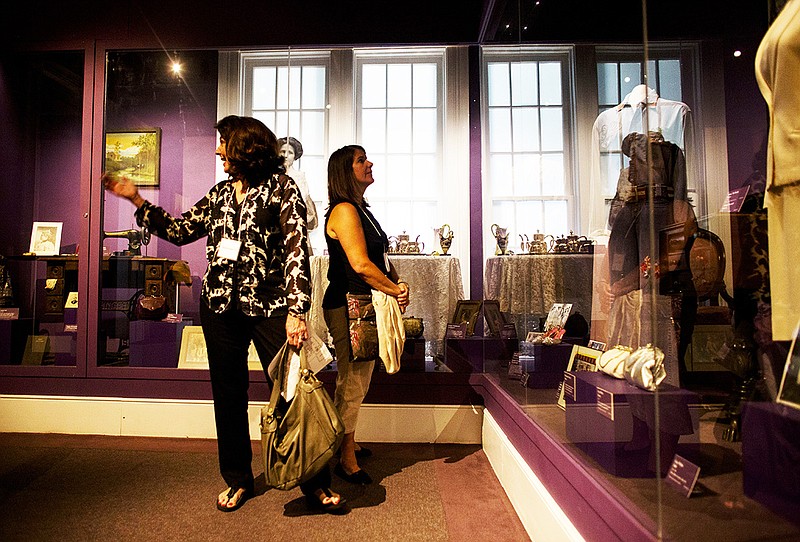LITTLE ROCK -- Inside a dimly lit glass case at the Old Statehouse Museum in Little Rock, the dress Louvenia Wallace Donaghey wore to her husband's inauguration as Arkansas' 22nd governor in 1909 stands alone.
The black, silk, floor-length gown with lace trimming and a cinched waist is one of 30 dresses normally displayed in the First Ladies' Gown collection. Usually, Donaghey's gown stands between those of Elizabeth Little and Ewilda Robinson, but they have recently been removed from display due to conservation concerns.
When museum curator Jo Ellen Maack conducted one of her weekly inspections of the exhibit, she noticed some dresses had tension along their seams.
"These gowns are from the turn of century," Maack said. "They are silk, wool and all other types of fabric. They are old, and they can't stand it."
As a result, the First Ladies' Gown collection will close on Sept. 8 while the dresses are assessed. The examination will last less than a week, however some dresses could be immediately removed from public display.
In the meantime, the museum will work on a long-term conservation strategy, which could include redesigning the exhibit and moving it to an off-site location while renovations are made.
Harold Mailand, director of an Indianapolis-based textile conservation service, will head the gown examinations. He did work for the museum in 1983, and helped restore and clean the gowns.
Though more gentle LED lights and fiber optic cases are used to control lighting and temperature in the exhibit, things weren't always done that way.
"During that (previous) period of time, it was customary to use natural light and fluorescent tubes to illuminate the exhibit, and those are two harmful things to any costume or object on display," Mailand said. "For decades, the fluorescent lighting was about 6 inches away from the dresses, fading the material ... some of the fabric started to deteriorate."
According to Mailand, 72 degrees Fahrenheit with 50 percent humidity is the best conditions to store the gowns.
Another issue affecting the material could be the mannequins on which the dresses rest, Mailand said.
Each mannequin is custom made from a plush material and is meant to resemble the body shape it originally inhabited.
It's possible that some mannequins are too big for the dresses they are supporting, but Mailand said he'll know more after the assessment.
Standing outside the exhibit Friday, Nancy Mays of Fayetteville quizzed herself about the cardboard cutouts of different governor's wives.
Mays, 75, said she has visited the museum about 10 times and that her daughters always loved the gown exhibit when they were growing up.
"It's always fun to see the different styles," she said. "It's already a beautiful building, and the gown exhibit just enhances it."
Local on 08/23/2014
